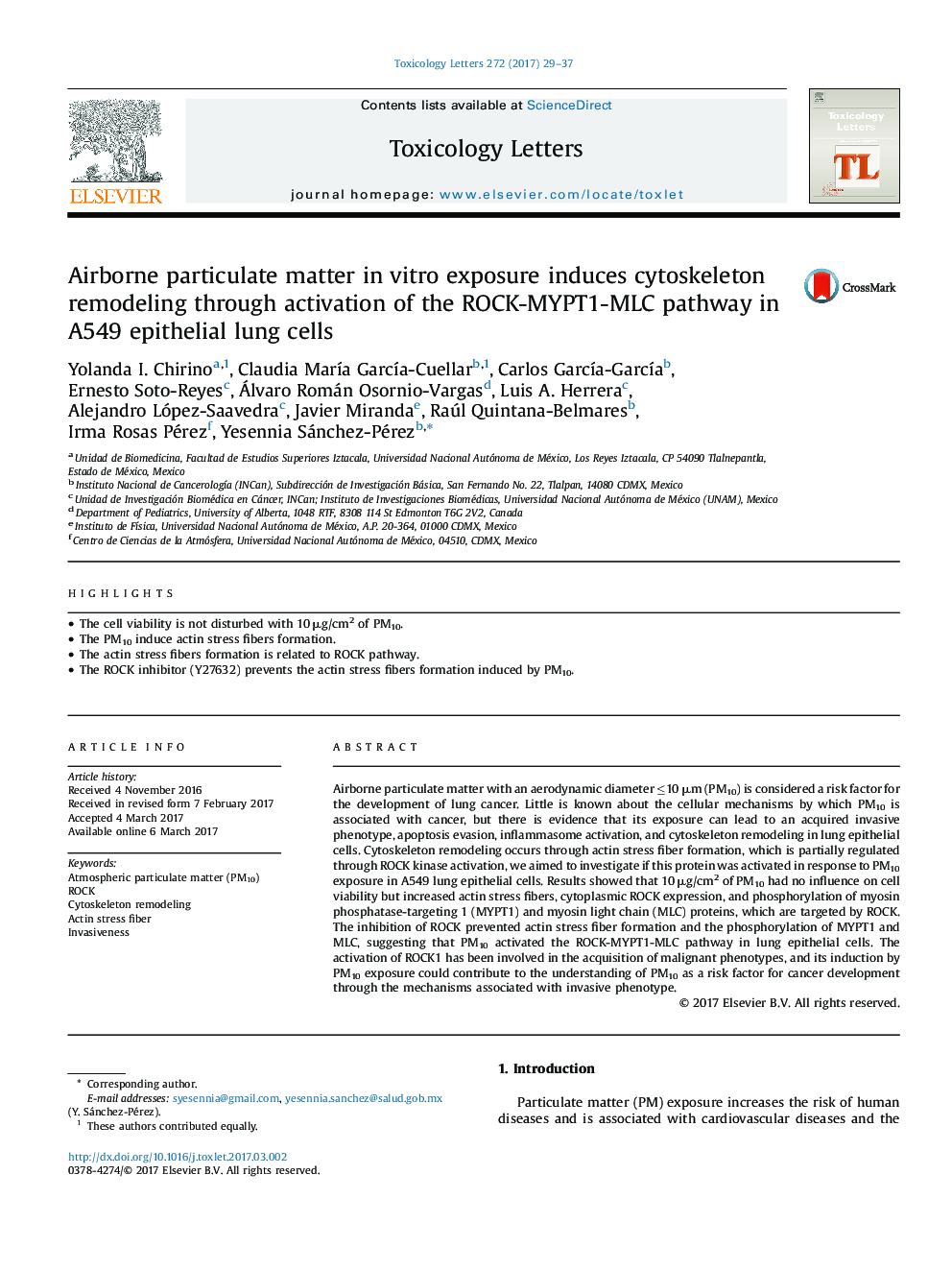| کد مقاله | کد نشریه | سال انتشار | مقاله انگلیسی | نسخه تمام متن |
|---|---|---|---|---|
| 5562131 | 1562601 | 2017 | 9 صفحه PDF | دانلود رایگان |

- The cell viability is not disturbed with 10 μg/cm2 of PM10.
- The PM10 induce actin stress fibers formation.
- The actin stress fibers formation is related to ROCK pathway.
- The ROCK inhibitor (Y27632) prevents the actin stress fibers formation induced by PM10.
Airborne particulate matter with an aerodynamic diameter â¤10 μm (PM10) is considered a risk factor for the development of lung cancer. Little is known about the cellular mechanisms by which PM10 is associated with cancer, but there is evidence that its exposure can lead to an acquired invasive phenotype, apoptosis evasion, inflammasome activation, and cytoskeleton remodeling in lung epithelial cells. Cytoskeleton remodeling occurs through actin stress fiber formation, which is partially regulated through ROCK kinase activation, we aimed to investigate if this protein was activated in response to PM10 exposure in A549 lung epithelial cells. Results showed that 10 μg/cm2 of PM10 had no influence on cell viability but increased actin stress fibers, cytoplasmic ROCK expression, and phosphorylation of myosin phosphatase-targeting 1 (MYPT1) and myosin light chain (MLC) proteins, which are targeted by ROCK. The inhibition of ROCK prevented actin stress fiber formation and the phosphorylation of MYPT1 and MLC, suggesting that PM10 activated the ROCK-MYPT1-MLC pathway in lung epithelial cells. The activation of ROCK1 has been involved in the acquisition of malignant phenotypes, and its induction by PM10 exposure could contribute to the understanding of PM10 as a risk factor for cancer development through the mechanisms associated with invasive phenotype.
Journal: Toxicology Letters - Volume 272, 15 April 2017, Pages 29-37